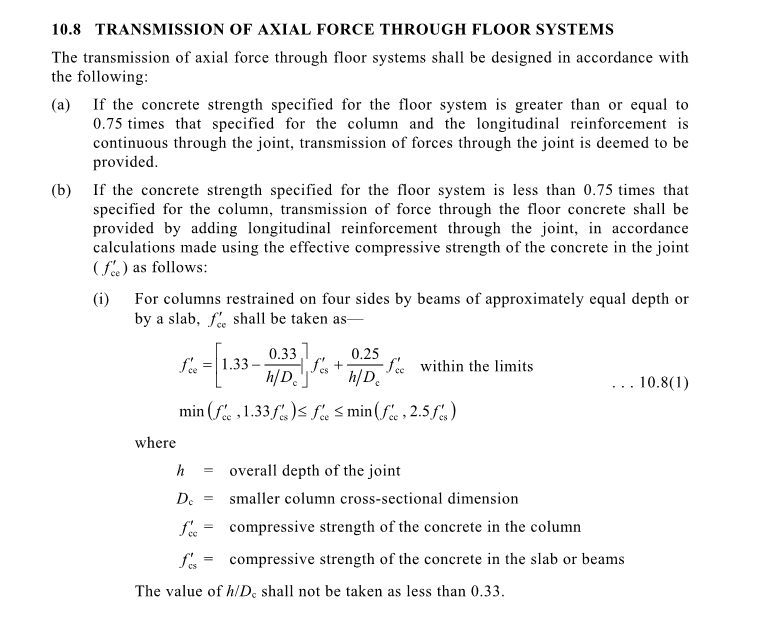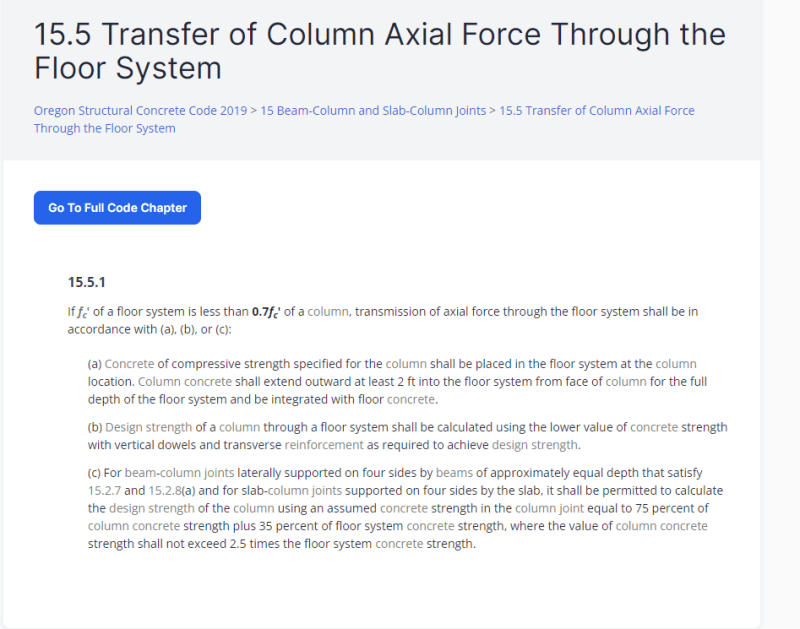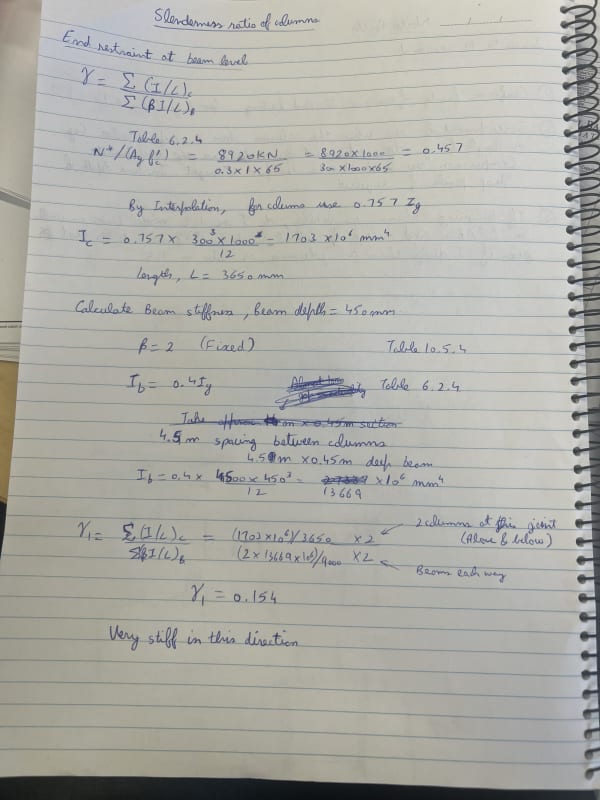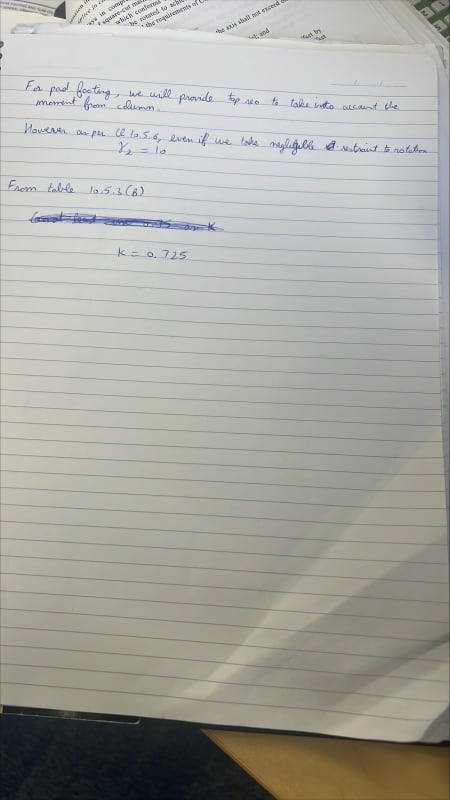Rav01
Structural
- Sep 3, 2024
- 4
Hi guys,
I am designing some 65MPa columns above and below a 40MPa slab. Referring to the Cl 10.8, it is a bit confusing to understand. Since I have to comply with (b) part of this clause, I have calculated my f'ce = 55MPa. It is a bit unclear whether this is the maximum compressive strength that I can use for the full height of my column or is it only for the section getting sandwiched in between. If it is just the slab section in between, why would I need any extra reinforcement? My slab is 400mm deep and 300x1000 columns. So, that small section of concrete should definitely work with the reinforcement that I am providing for the columns for the axial load that is getting transferred from above column to below.
ACI code says that I can use 75% of column strength + 35% of slab strength which is 62.5 MPa in my case.
Please let me know what your thoughts are on this.


I am designing some 65MPa columns above and below a 40MPa slab. Referring to the Cl 10.8, it is a bit confusing to understand. Since I have to comply with (b) part of this clause, I have calculated my f'ce = 55MPa. It is a bit unclear whether this is the maximum compressive strength that I can use for the full height of my column or is it only for the section getting sandwiched in between. If it is just the slab section in between, why would I need any extra reinforcement? My slab is 400mm deep and 300x1000 columns. So, that small section of concrete should definitely work with the reinforcement that I am providing for the columns for the axial load that is getting transferred from above column to below.
ACI code says that I can use 75% of column strength + 35% of slab strength which is 62.5 MPa in my case.
Please let me know what your thoughts are on this.




